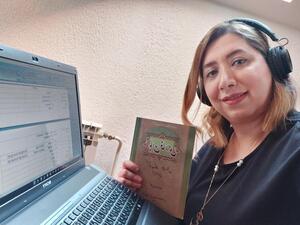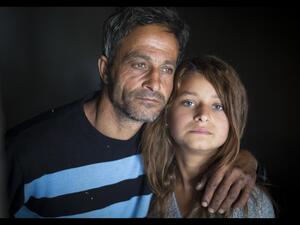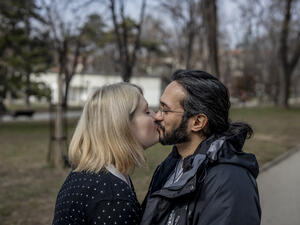Kosovo Crisis Update
Kosovo Crisis Update
The Exodus
The number of people fleeing the carnage in Kosovo since widespread internal unrest started in March, 1998 totalled more than 621,000 by Wednesday. In the biggest influx, 293,000 persons have now sought sanctuary in Albania and a further 136,000 in the FYR of Macedonia. Smaller numbers reached Montenegro (60,000), Bosnia and Herzegovina (24,300, including some persons from Sandzak), Turkey (7,700) and Croatia (330). Further afield, an estimated 100,000 Kosovo Albanians have lodged asylum applications in 27 European countries in the last year.
UNHCR estimates until now reflected separately the number of Kosovars who had fled their province since March 24, 1999, the day NATO launched its operations in the region. The new figures show the total number of people who have left their homes since Kosovo effectively plunged into widespread unrest a year earlier, in March, 1998.
As an international aid effort moved into high gear, the situation of refugees varied wildly from region to region Wednesday. In the most dramatic development, Macedonian authorities overnight cleared out a squalid field in no-man's land along the border, sending tens of thousands of refugees in all directions. Many transferred to new transit camps nearby, but others were bundled onto planes and buses and were being shipped out of the region.
The main exit point for Kosovars had been the Morini crossing into Albania and some people arriving there Tuesday reported continuing atrocities by Serbian forces. But by Wednesday morning both the Morini and Qafe Prushit border crossings were closed.
There were virtually no new arrivals on Tuesday at the third major exit point from Kosovo, into neighbouring Montenegro.
Scenes of confusion
For days the refugees had been pouring into the Blace checkpoint separating Macedonia from Kosovo, but tens of thousands became trapped in a legal and physical limbo in a huge, muddy field in no man's land - not allowed to enter Macedonia proper.
Tuesday night, Macedonian authorities cleared the field within a matter of hours and by morning only a few dozen people remained at medical centres. Bus shuttles carried thousands of refugees to the newly-established Brazda transit centre where they received hot meals and were housed in tents. By morning an estimated 30,000 people were believed to be in Brazda.
The picture was far more confusing for other refugees. Several aircraft shuttled Kosovars to Turkey which has agreed to accept as many as 20,000 people, but some of the evacuees said they had been forced to leave. Convoys of buses moved other refugees toward the Albanian border. There were unofficial reports that buses full of refugees also headed toward Greece.
UNHCR insists all evacuations must be voluntary.
At a second checkpoint at the Macedonian border, at Jazince, there were also scenes of chaos. One crowd of 3,000 people were packed so tightly children were trapped underneath the mob and at one point several had to be pulled from the crowd. Just across the frontier in Kosovo itself, as many as 20,000 people had gathered to try to cross the frontier, but the checkpoint was effectively closed.
There were disquieting reports from inside Kosovo that authorities there were now sending some people back to their home areas and turning them away from the Macedonian border.
In Albania, at least 23,000 Kosovars arrived through the Morini checkpoint Tuesday, before it was closed by Yugoslav authorities Wednesday morning. A huge 35-kilometre tailback of cars stretching to the Kosovo town of Prizren had built up and Albanian authorities had opened a second line for vehicles to speed the entry process. The border authorities issued an entry document to each car owner. People who were dropped by bus away from the border and who crossed on foot did not receive any documentation. Some pedestrians said they had to pay on the buses, effectively subsidizing their own expulsion.
Some refugees told tales of continuing atrocities. Several men said they were among a group of 100 males who had been used as human shields by Serbian soldiers assaulting a Kosovo Liberation Army position at Krajlan between the towns of Klina and Djakovica one week ago. There were other reports of ongoing executions and separation of men from their families, but none of these reports could be independently verified.
Serbian forces also closed the second major crossing point into Albania at Qafe Prushit and there were no new arrivals there. Serbian forces were digging trenches nearby and reportedly threatened to shoot aid workers approaching too closely.
A total of 85 metric tons of aid were moved to the Kukes area of Albania Tuesday, six Italian and French helicopters, helping in the transportation. Food was distributed immediately. Water and sanitation remain major problems, though Oxfam was moving equipment into the region Wednesday.
An estimated 100,000 refugees remain in the Kukes area while many others have already left for central Albania.
The Macedonian government began moving some refugees from the border to other countries, some of them against their will. Several flights left for Turkey while convoys of buses reportedly moved people to the Albanian and Greek borders. At the Blace border area there was a constant bus shuttle throughout Tuesday as refugees were crammed into vehicles and shipped out. Some refugees complained not only that they didn't know where they were going but were also being split up from the rest of their families.
UNHCR has issued a set of evacuation guidelines which stress that any evacuations must be voluntary and families be kept together. UNHCR officials have been holding urgent consultations with Macedonian officials on the situation.
Mrs. Ogata's visit
After hosting an international conference on the Kosovo crisis in Geneva Tuesday, High Commissioner Sadako Ogata flew first to Rome for an audience with Pope John Paul II and talks with Italian government officials before taking a first hand look at the situation in Albania and Macedonia.
In her summing up remarks at the conference, Mrs. Ogata outlined UNHCR's position on both the eventual return of refugees to Kosovo and their temporary evacuation to countries outside the region to delegates from more than 50 countries and other humanitarian organizations.
The majority of refugees eventually want to return to their homes and for this reason UNHCR believes "it is better to protect and assist refugees in the vicinity of Kosovo, in order to facilitate what we hope will be an early return," she said.
However, UNHCR recognized that in the shorter term, it would be necessary to offer some refugees temporary safety in countries outside the region. In those cases, all evacuations had to be totally voluntary. "Forced evacuations will not - I repeat not - be accepted by UNHCR," she said.
Europe, especially, already had experience in providing refugees from the former Yugoslavia with temporary protection and "refugees arriving from Kosovo should be afforded similar, harmonized protection standards as long as the need exists," she said. "Refugees with special protection needs, including family reunification, should be carefully identified for long term resettlement in third countries."
On the question of coordinating the rapidly increasing humanitarian response to the Kosovo situation the High Commissioner said "We are working hard to improve coordination arrangements" including new mechanisms with NGO partners. She urged potential donors, however, to consult in advance before sending either supplies or reinforcements into the region.
A new appeal
As the scale of the crisis continued to increase a new United Nations inter-agency 'donor alert' was launched. For planning purposes the appeal, which runs through June 30, estimated 650,000 refugees would probably need help and the concerned agencies asked for a total of $138.4 million to meet their needs, including nearly $65 million for UNHCR.









